In the ever-evolving landscape of compact SUVs, the Mazda CX-30 and Renault Captur stand out as strong contenders. Both vehicles offer unique blends of aesthetics, technology, and performance but cater to different driving philosophies. This article delves into the technical aspects and innovative features of both models to help prospective buyers make an informed choice.
Mazda CX-30 vs Renault Captur – Performance, range & efficiency compared
Compare performance, boot capacity, efficiency and price at a glance.
Find out which car is the better choice for you – Mazda CX-30 or Renault Captur?
Powertrain and Performance
The Mazda CX-30 boasts a robust engine lineup, featuring a petrol MHEV with options ranging from 140 HP to 186 HP. With a choice between manual and automatic transmissions, the CX-30 caters to diverse driver preferences. Its acceleration times are impressive, clocking in as low as 8.3 seconds for the 0-100 km/h sprint, thanks to its powerful 2.0-liter engine. The all-wheel-drive variant offers enhanced handling and stability, particularly in adverse weather conditions.
On the other hand, the Renault Captur offers a well-rounded powertrain lineup that includes a full hybrid, petrol MHEV, LPG, and standard petrol options. The Captur's maximum output reaches 158 HP. Its acceleration, while a touch slower than the CX-30, still competes well within its segment, achieving the 0-100 km/h mark in as little as 8.5 seconds. The front-wheel-drive setup ensures a smooth driving experience, although it might slightly lag behind the CX-30 in more challenging terrains.
Fuel Efficiency and Emissions
Fuel efficiency is a noteworthy aspect of the Mazda CX-30, with consumption figures ranging between 5.7 to 6.6 L/100 km. The vehicle also boasts a CO2 emissions rating that varies from 129 to 148 g/km, placing it within the D and E efficiency classes. The combination of performance and relatively low consumption makes it an appealing option for environmentally-conscious drivers.
Conversely, the Renault Captur shines in fuel efficiency, particularly with its hybrid variants. It records consumption figures as low as 4.7 L/100 km, showcasing its commitment to sustainability. With CO2 emissions ratings ranging from 106 to 139 g/km, the Captur holds an edge in terms of greener credentials, typical of Renault's innovative engineering philosophy.
Interior and Technology
Inside, the Mazda CX-30 is celebrated for its driver-centric layout and premium materials, giving off a more upscale vibe. The infotainment system is intuitive, featuring a centrally positioned screen that integrates seamlessly with smartphone connectivity options. The spacious trunk capacity of 430 liters provides practical storage for day-to-day usage.
The Renault Captur, while also spacious, takes a slightly different approach with a focus on customizable interior elements. The technology packed into the Captur is impressive, with an energetic infotainment system that supports multiple connectivity options. The trunk space matches that of the CX-30 at 422 liters, making it practical for family outings and everyday tasks.
Safety Features
Safety is a priority for both vehicles, with the Mazda CX-30 equipped with an array of advanced safety features, including adaptive cruise control, lane-keeping assistance, and automatic emergency braking. These features contribute to a higher safety rating that gives drivers peace of mind on the road.
Similarly, the Renault Captur doesn't fall short in the safety department. It incorporates a suite of safety technologies, including automatic emergency braking, lane departure warnings, and other driver assistance systems, ensuring a secure driving experience for occupants.
Conclusion: Which SUV Suits You?
Ultimately, the choice between the Mazda CX-30 and the Renault Captur boils down to personal preferences. If you prioritize performance and an upscale interior, the CX-30 is an excellent option. However, if eco-friendliness, fuel efficiency, and customizable interiors are at the forefront of your automotive desires, the Captur caters beautifully to those specific needs.
Both vehicles encapsulate the essence of modern SUVs, offering a blend of style, functionality, and innovation, ensuring that whichever model you choose, you'll be driving a truly impressive machine.
Here’s where it gets real: The technical differences in detail
Costs and Efficiency:
When it comes to price and running costs, the biggest differences usually appear. This is often where you see which car fits your budget better in the long run.
Renault Captur has a somewhat advantage in terms of price – it starts at 21100 £, while the Mazda CX-30 costs 25200 £. That’s a price difference of around 4106 £.
Fuel consumption also shows a difference: Renault Captur manages with 4.50 L and is therefore clearly perceptible more efficient than the Mazda CX-30 with 5.70 L. The difference is about 1.20 L per 100 km.
Engine and Performance:
Power, torque and acceleration are the classic benchmarks for car enthusiasts – and here, some clear differences start to show.
When it comes to engine power, the Mazda CX-30 has a evident edge – offering 186 HP compared to 143 HP. That’s roughly 43 HP more horsepower.
In acceleration from 0 to 100 km/h, the Mazda CX-30 is hardly perceptible quicker – completing the sprint in 8.30 s, while the Renault Captur takes 8.90 s. That’s about 0.60 s faster.
In terms of top speed, the Mazda CX-30 performs somewhat better – reaching 204 km/h, while the Renault Captur tops out at 180 km/h. The difference is around 24 km/h.
There’s also a difference in torque: Renault Captur pulls slight stronger with 265 Nm compared to 240 Nm. That’s about 25 Nm difference.
Space and Everyday Use:
Whether family car or daily driver – which one offers more room, flexibility and comfort?
Both vehicles offer seating for 5 people.
In curb weight, Renault Captur is barely noticeable lighter – 1323 kg compared to 1455 kg. The difference is around 132 kg.
In terms of boot space, the Mazda CX-30 offers slight more room – 430 L compared to 422 L. That’s a difference of about 8 L.
In maximum load capacity, the Mazda CX-30 performs hardly perceptible better – up to 1406 L, which is about 43 L more than the Renault Captur.
When it comes to payload, Mazda CX-30 minimal takes the win – 496 kg compared to 453 kg. That’s a difference of about 43 kg.
Who wins the race?
The Mazda CX-30 proves to be only a minor advantage and therefore becomes our DriveDuel Champion!
Mazda CX-30 is the better all-rounder in this comparison.
 @ Mazda Motor Corporation
@ Mazda Motor Corporation
Mazda CX-30
Mazda CX-30
The Mazda CX-30 blends sleek coupe-like lines with the practicality of a compact crossover, feeling more premium than its price tag suggests. It’s a joy to drive for anyone who likes a taut chassis and an interior that treats daily commutes like a small luxury escape.
details @ Mazda Motor Corporation
@ Mazda Motor Corporation
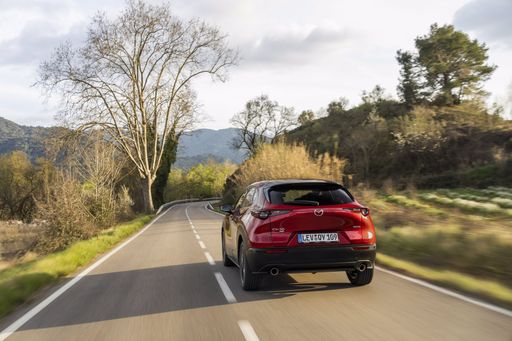 @ Mazda Motor Corporation
@ Mazda Motor Corporation
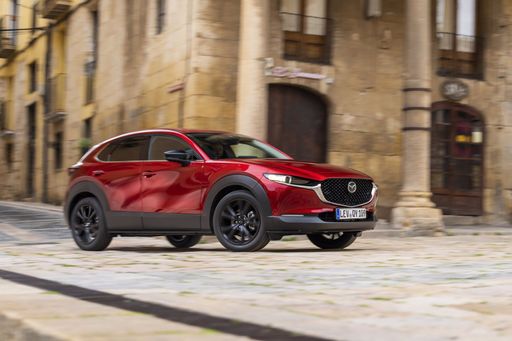 @ Mazda Motor Corporation
@ Mazda Motor Corporation
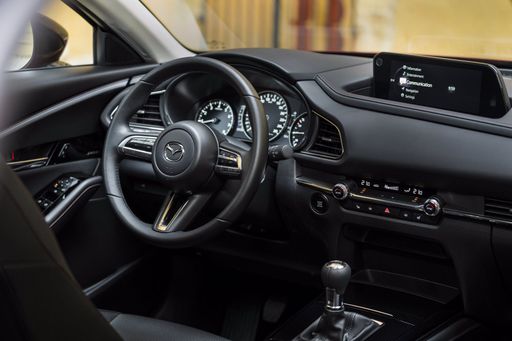 @ Mazda Motor Corporation
@ Mazda Motor Corporation
Renault Captur
The Renault Captur is a cheeky little crossover that pairs city-friendly agility with a roomy, well-thought-out cabin and enough style to turn heads at the lights. It’s a sensible choice for buyers who want practical versatility and a dash of personality on their daily drives, without taking itself too seriously.
details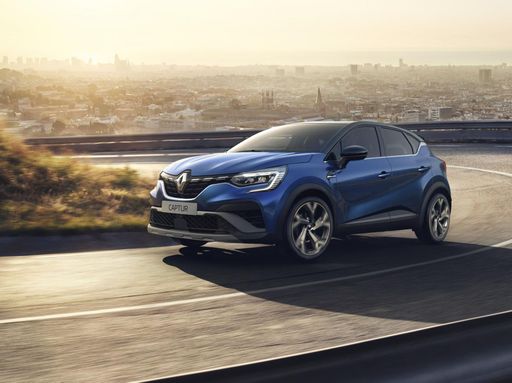 @ Renault Group Media
@ Renault Group Media
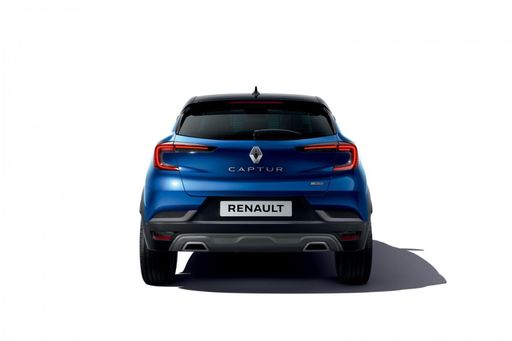 @ Renault Group Media
@ Renault Group Media
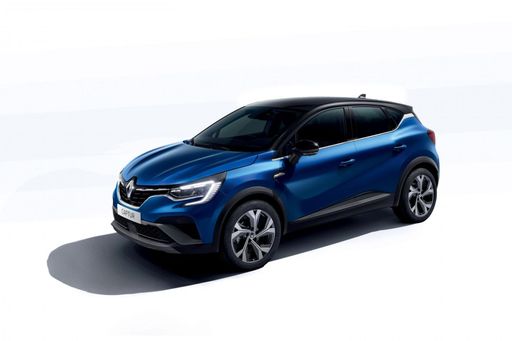 @ Renault Group Media
@ Renault Group Media
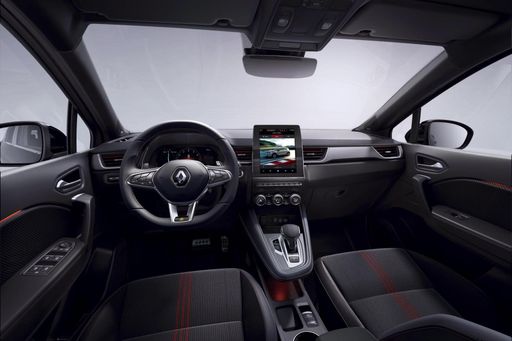 @ Renault Group Media
@ Renault Group Media
 @ Mazda Motor Corporation
@ Mazda Motor Corporation
|
 @ Renault Group Media
@ Renault Group Media
|
|
|
|
Costs and Consumption |
|
|---|---|
|
Price
25200 - 36800 £
|
Price
21100 - 28300 £
|
|
Consumption L/100km
5.7 - 6.6 L
|
Consumption L/100km
4.5 - 6 L
|
|
Consumption kWh/100km
-
|
Consumption kWh/100km
-
|
|
Electric Range
-
|
Electric Range
-
|
|
Battery Capacity
-
|
Battery Capacity
-
|
|
co2
129 - 148 g/km
|
co2
102 - 137 g/km
|
|
Fuel tank capacity
48 - 51 L
|
Fuel tank capacity
48 L
|
Dimensions and Body |
|
|---|---|
|
Body Type
SUV
|
Body Type
SUV
|
|
Seats
5
|
Seats
5
|
|
Doors
5
|
Doors
5
|
|
Curb weight
1455 - 1587 kg
|
Curb weight
1323 - 1514 kg
|
|
Trunk capacity
422 - 430 L
|
Trunk capacity
326 - 422 L
|
|
Length
4395 mm
|
Length
4239 mm
|
|
Width
1795 mm
|
Width
1797 mm
|
|
Height
1540 mm
|
Height
1575 mm
|
|
Max trunk capacity
1398 - 1406 L
|
Max trunk capacity
1276 - 1363 L
|
|
Payload
458 - 496 kg
|
Payload
376 - 453 kg
|
Engine and Performance |
|
|---|---|
|
Engine Type
Petrol MHEV
|
Engine Type
Full Hybrid, Petrol, Petrol MHEV
|
|
Transmission
Manuel, Automatic
|
Transmission
Automatic, Manuel
|
|
Transmission Detail
Manual Gearbox, Automatic Gearbox
|
Transmission Detail
Automatic Gearbox, Manual Gearbox, Dual-Clutch Automatic
|
|
Drive Type
Front-Wheel Drive, All-Wheel Drive
|
Drive Type
Front-Wheel Drive
|
|
Power HP
140 - 186 HP
|
Power HP
115 - 143 HP
|
|
Acceleration 0-100km/h
8.3 - 10.3 s
|
Acceleration 0-100km/h
8.9 - 12.3 s
|
|
Max Speed
191 - 204 km/h
|
Max Speed
180 km/h
|
|
Torque
238 - 240 Nm
|
Torque
160 - 265 Nm
|
|
Number of Cylinders
4
|
Number of Cylinders
3 - 4
|
|
Power kW
103 - 137 kW
|
Power kW
84 - 116 kW
|
|
Engine capacity
1998 - 2488 cm3
|
Engine capacity
1199 - 1789 cm3
|
General |
|
|---|---|
|
Model Year
2025
|
Model Year
2025
|
|
CO2 Efficiency Class
D, E
|
CO2 Efficiency Class
C, D, E
|
|
Brand
Mazda
|
Brand
Renault
|
What drive types are available for the Mazda CX-30?
The Mazda CX-30 is offered with Front-Wheel Drive or All-Wheel Drive.
The prices and data displayed are estimates based on German list prices and may vary by country. This information is not legally binding.
